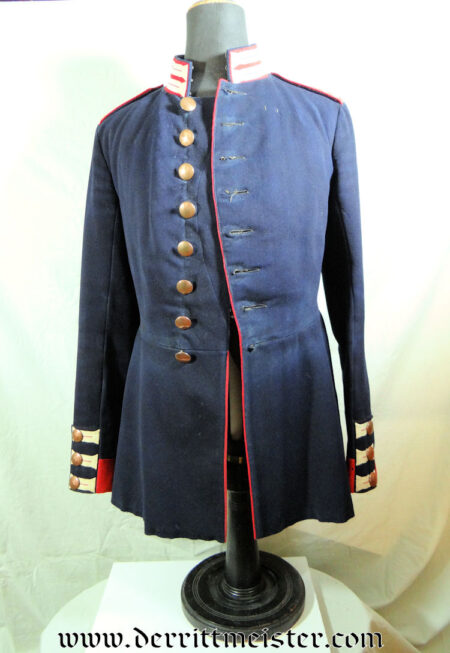Description
This is an enlisted man’s tunic from Königl. Sächs. 11. Infanterie-Regiment Nr 139. The Regiment was raised in 1887. It was garrisoned at Döbeln, where it was attached to the XIX. Armeekorps.
The dunkel-blau tunic has eight gilt-toned buttons down its center. Its cuffs are red with a gilt button, which is just above the blue material. The collar is also red, and sports twin gilt Saxon Gefreiter’s collar buttons. The shoulder straps are blue, trimmed in red. The regimental number “139” appears in yellow on each strap. The straps are held in place on one side by stitching. On the other side they are held with smaller gilt buttons sporting “Nr 11,” which indicates the Kompagnie Number. The reverse displays three out-of-four buttons usually present on the vent flap. Both the tunic’s obverse and its reverse show a fair amount of scattered mothing. [This is a partial tradeoff for its price]. Inside is a silk liner. It also has depot marks showing it was first issued in 1900.
The tunic has some problems, as we have stated above, but it is most attractively priced. Were it up to our normal standard of condition, it would cost several hundred dollars more.



















